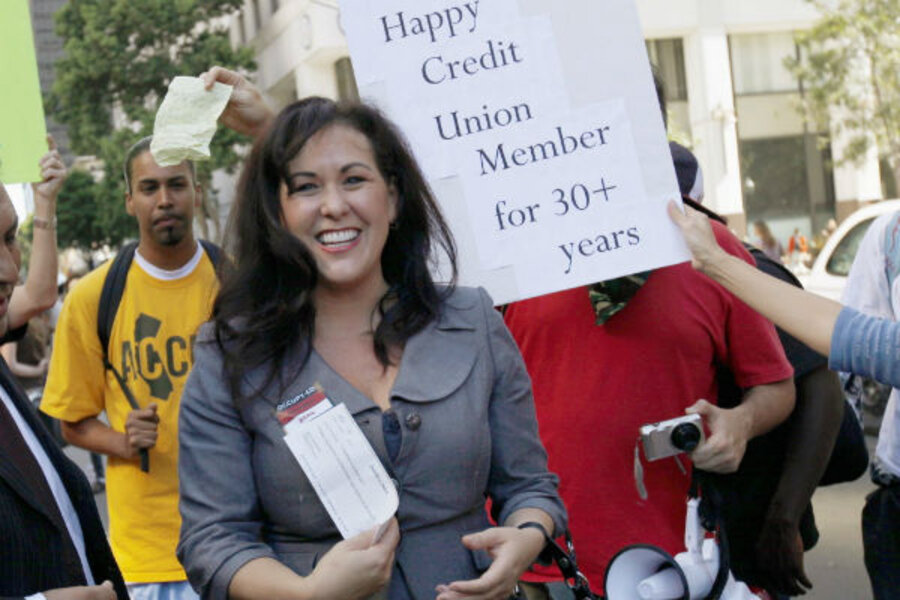Want to get rich? Creating a financial cushion is the first step
Loading...
We’ve written before about ways the rich get richer. Chief among them: not being forced to waste money by paying interest to credit card companies and other lenders.
A recent survey from Bankrate reveals why so many people have trouble doing this – they have zero money set aside for emergencies. Of the 1,000 people interviewed for the recent survey, 28 percent of respondents (18 percent of retirees) admitted they had no emergency savings and 21 percent said “some, but less than three months’ expenses.”
What happens when you have no financial cushion and a big, unexpected bill comes up? You borrow to meet the expense and, as a result, become poorer. Say you blow the engine in your car, for example, and need $5,000 for an immediate fix. If you’ve got the money, you pay it and go on down the road. If you don’t, you might use a credit card and borrow it at 15 percent interest. Make minimum payments on that debt, and you’ll end up paying more than $12,000 for the repair – $5,000 for the shop that did the work, and $7,000 for the one that fronted the cash.
This does more than make you $7,000 poorer. There’s also opportunity cost to consider, because the $7,000 you paid in interest could have been working for you instead of against you. For example, if you’d kept that $7,000 and were able to earn 10 percent on it by investing in stocks, it would have grown to $18,000 in 10 years – that’ s another $11,000 you could have been richer.
This is precisely how those with money get more and those without get less.
That’s the argument for having an emergency fund. But how do you build one when you’re barely making ends meet?
First, realize you’re not alone. According to CareerBuilder, 42 percent of workers live paycheck to paycheck – including lots of people making six figures. The solution for all these people isn’t to hit the lotto, where your odds are more than 100 times worse than the odds of being struck by lightning. The answer is to save smart, day by day, following these steps…
Step 1: Set a specific goal
If your goal is, “Save a lot of money” you’ll likely fail. Successful planning requires specifics that help you prioritize long-term goals (an emergency fund) over short-term ones (eating out every week).
For example: “Save $5,000 by this date next year.” Having a specific amount and date leaves no wiggle room – you have to come up with $415 extra bucks a month to make it happen.
In short, the more specific your date and destination, the more likely you are to reach it. Tools like Mint.com’s goal tracker can help you stay on top of things and make it easier to analyze your spending for more savings.
Step 2: Pay yourself first
Here’s another common tactic that doesn’t work: “Keep what’s left at the end of the month.” Why? Because there’s rarely anything left. Try this instead: Treat your goal like your most important bill. Think of it as money you owe yourself, due on a certain date.
Want to make it even easier? Automate a regular transfer from checking to savings.
Step 3: Find extra money
Saving now is more important than saving big. Even if it’s just $25 a month, do it now and don’t stop.
Start saving by adjusting your spending plan – Money Talks News is all about finding ways to save without sacrificing quality of life. Whatever the budget item – groceries, fuel costs, home energy, cable – we’ve probably written about how to spend less doing it. (If we haven’t, drop us a line and let us know.) Here are just a few of the hundreds of saving ideas we have…
- Buy generic when it makes no difference (aspirin, sugar, salt, flour, bleach) and save 30 percent.
- Use smartphone apps like GasBuddy to find the lowest local price on gas.
- Check and change your AC’s filters and clean its coils monthly – it can reduce your power bill by 10 percent.
Going on a “dollar diet” is tough – nobody wants to starve themselves. But tips like these don’t negatively impact your life – they simply allow you to live the same life for less money. Just be sure to add to your savings when you subtract from your spending.
Step 4: Keep growing
Once you get an emergency fund built, you can start saving in places where you can make a lot more – like the stock market, real estate or your own business.
For instance, say you save $150 a month. Do that for 20 years without investing it and you have $36,000. A nice sum, but look at what you end up with at these interest rates…
- At 2 percent – $44,219
- At 5 percent - $61,655
- At 10 percent – $113,905
- At 15 percent – $224,586
Higher returns don’t happen without risk, and they don’t happen overnight. The only way you can invest in things like stocks or real estate is to have money you won’t need for at least five years. That’s why step one is to build a cash cushion so you can take more a little more risk and more time to potentially earn a higher return.
That’s how the rich get richer – and you will too.
Brandon Ballenger is a writer for Money Talks News, a consumer/personal finance TV news feature that airs in about 80 cities as well as around the Web. This column first appeared in Money Talks News.







